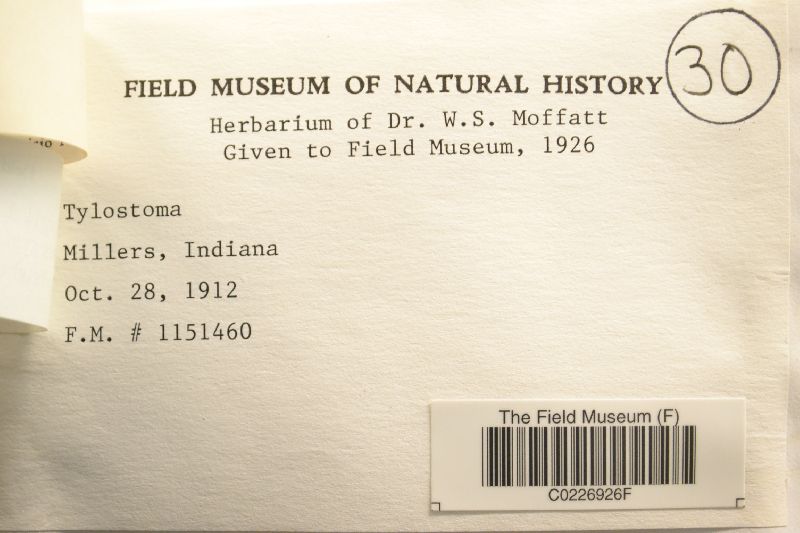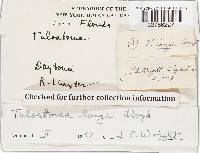
|
|
|
|
Family: Agaricaceae
|
Wright J.E. 1987. Bibliotheca Mycologia 113: 142. Tulostoma longii Lloyd (Fig. 89; Pls. VI: 1; XXXVI:5) - The Tylostomeae, p. 15. 1906. Etym.: named in honour of Dr. W. H. Long. Spore-sac small, generally not exceeding 12 mm diam, the average abt 7-9 mm. Exoperidium membranous, light brown to leather coloured to dirty brown, sometimes very persistent on the endoperidium, either on the upper part or as patches firmly adhering to it. Endoperidium almost smooth or with scars of sand grains, sometimes with dark granules, papyraceous, fragile, whitish. yellowish to greyish, sometimes darker, up to light bronze coloured with reddish hues. Mouth tubular, slightly projecting over the surface of the endoperidium, 1 mm diam, in some collections the peristome darker than the rest of the endoperidium. Socket conspicuous, slightly separated from the stem, with a long or short (and then pendulous) membrane, dentate, light-coloured. Stem up to 25 x 1-1.5 mm, rugose to slightly squamulose, light-coloured, almost white in some specimens, fibrillose, slightly striate in some specimens, tapering towards the base. Gleba light-coloured, although in some specimens it may be almost ferrugineous. Spores globose to elliptic or irregular, almost smooth to slightly angulose under L.M. with a good oil-immersion objective, but appearing-with isolated small verrucae in the apicular region, larger and sparse, sometimes forming low crests in the lremaining surface under SEM; very small (the smallest known in the genus, 1.9-3.6 µm diam, most frequently 2.1-3 µm diam, some apiculate, generaly hyaline although some slightly tinged. Capillitium subhyaline to yellowish under low power, branched septate, thick-walled with almost solid lumen, swollen at the frequent septa, easily disjointable (?), 2.4-7.8 µm diam. Habitat: sandy soil, generally isolated. Distribution: North America: SE United States. Holotype: United States, Herb. Clyde Fischer (Herb. Lloyd, BPI!, NY!). Illustration: None known. |
|
|
|
















